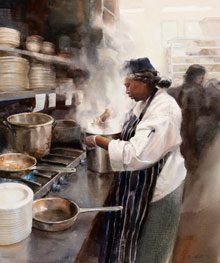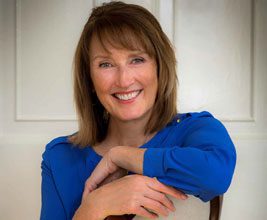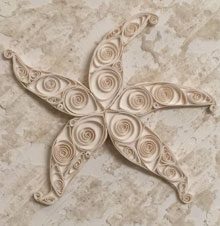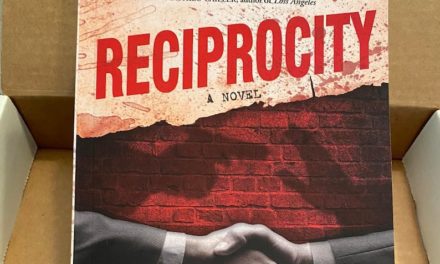 ‘We the People’ artist Mary Whyte will make virtual appearances at November festivals.
‘We the People’ artist Mary Whyte will make virtual appearances at November festivals.
 Mary Whyte is an internationally acclaimed watercolor artist who makes her home in the Lowcountry. Whyte is known for her detailed, hyper-realistic portraits and her unique ability to capture the emotion of a moment. In 2019, she unveiled a project that was years in the making: “We the People.” Her aim was to paint a vision of America through portraits of fifty veterans from fifty states. She captured these veterans in moments that surprise, empower, and expand the viewer’s understanding of our country. The exhibition now tours nationally and also takes the form of a book, also titled We the People. Whyte will soon visit us, albeit virtually, as part of our Pat Conroy Literary Festival and the Crescendo arts festival, on Thursday, November 5, at 6:30 p.m., in conversation with ETV Lowcountry’s Holly Jackson. To register for this free event, visit https://bit.ly/3lQbS6M or the Pat Conroy Literary Festival Facebook page, www.facebook.com/PatConroyFestival.
Mary Whyte is an internationally acclaimed watercolor artist who makes her home in the Lowcountry. Whyte is known for her detailed, hyper-realistic portraits and her unique ability to capture the emotion of a moment. In 2019, she unveiled a project that was years in the making: “We the People.” Her aim was to paint a vision of America through portraits of fifty veterans from fifty states. She captured these veterans in moments that surprise, empower, and expand the viewer’s understanding of our country. The exhibition now tours nationally and also takes the form of a book, also titled We the People. Whyte will soon visit us, albeit virtually, as part of our Pat Conroy Literary Festival and the Crescendo arts festival, on Thursday, November 5, at 6:30 p.m., in conversation with ETV Lowcountry’s Holly Jackson. To register for this free event, visit https://bit.ly/3lQbS6M or the Pat Conroy Literary Festival Facebook page, www.facebook.com/PatConroyFestival.
In an email interview, Whyte shared her experiences as an artist and as creator of “We the People,” her incredible tribute to our country and our veterans.
Holland Perryman: In your artist’s statement to “More than a Likeness,” you write, “I have always believed that as artists we don’t choose our vocation…. Art chooses us.” When did art choose you? And what advice would you give to someone considering life as an artist?
Mary Whyte: I remember drawing as a very small child. It was something I just did—it didn’t seem unusual or special. Being an artist isn’t something that we decide to do, it’s something that we discover we were all along. But at some point we must decide, “How much am I going to commit to this gift I have been given?” The advice I would give to young artists is, decide how important creating art is to you, and how much you are willing to sacrifice to make it happen.
HP: Let’s talk about the origin of “We the People.” Why did you decide you wanted to paint veterans?
MW: The idea for the series came from a desire to paint an earnest, contemporary portrait of our country. The first challenge I faced was how to select just one American from each state. I realized then that our truest Americans are our military veterans, and in them I would find the great diversity of people I was looking for.
HP: Journeying across the country to find subjects from all over for this project is a huge  endeavor. How did you meet your subjects?
endeavor. How did you meet your subjects?
MW: I began by making a list of the types of people I wanted to include. I wanted to incorporate all kinds of Americans, from an astronaut down to a homeless person, and everything in between, such as a tattoo artist, teacher, boxer, farmer, lobsterman and so on. Then I started searching the internet and making phone calls. I wanted to create enough diversity in the portraits so that everyone who sees the exhibition might feel recognized. There were, of course, many people along the way that I wish I could have included, or that I thought would be interesting to paint. I will have to save them for the next project. “We the People” took over seven years to get to all fifty states and to complete the paintings. I self-funded the project, traveled mostly by myself, and accomplished it almost entirely in secret.
HP: What did you learn about our country through the veterans’ stories? What do you hope it teaches us about lives of service?
MW: Traveling the United States for seven years showed me an amazingly beautiful country, rich in wildlife, natural resources, and gorgeous vistas. Talking with veterans and hearing their stories taught me a great deal about strength and perseverance, and that the ideals on which this country were founded are still worth fighting for. Each possessed an unwavering sense of honor and commitment to their community, family, and country. All of them touched my heart. Through the veterans I have learned that no matter what challenges we may face, to never, ever give up. Living a life of service, whether it is in the military or in our neighborhood, is the only way we can ensure the future of freedom, hope, and democracy in this country.
HP: How best can we honor the service and sacrifices of our veterans?
MW: Every veteran raised their hand in a pledge to our nation and risked their life for our freedoms. Theirs is an amazing sacrifice on the very face of it, and it wasn’t until I had finished the project before I realized that in many countries, I wouldn’t be able to do this—to be a woman traveling wherever I want on my own, and to paint what I choose, all with the expectation of a better life. For this, I have our military and veterans to thank. To all of them we owe our deepest gratitude and a sincere commitment that their sacrifice was not in vain.
HP: Some artists say that watercolor is the most difficult medium, and yet you create pieces that look as detailed as photographs. How do you create such detailed and realistic pieces? How do you convey your subjects’ emotions so effectively?
MW: Most artists would agree that watercolor is challenging, especially because it is the only medium that relies strictly on timing. Color gradation, textures, hard and soft edges—all must be timed perfectly in the brushwork in order to achieve the desired effect. It takes years of practice to gain proficiency as well as a technical vocabulary. Conveying the deep emotion of the model in the painting is something entirely different. It starts with observation and ends with the heart.
HP: We are grateful that you will be part of our Pat Conroy Literary Festival and Crescendo. What does it mean to you to be a part of the festival established in Mr. Conroy’s honor?
MW: I have always admired the writing of Pat Conroy, and I have read most of his books. I was fortunate to have met him, and I adored his raw humor. His work represents the very essence of Southern literature, and to have a festival established in his honor seems only fitting. I would like to think he would approve of “We the People,” as the son of a Marine fighter pilot and a chronicler of the human spirit.
HP: In “We the People,” you painted individual portraits only, no groups or scenes. Why do our individual stories matter?
MW: I am aware that when people view my work that they probably won’t recognize the person in the painting. But my hope is that they will recognize the emotion. It’s the one thing we all have in common, the universal thread that connects us one to another. When people talk about the veteran paintings, they generally don’t mention what the individual in the painting was wearing, or what he or she was depicted doing. They talk about the emotion of the painting, and how it connects to something significant in their own lives.
Holland Perryman is a junior at Beaufort High School and an intern at the Pat Conroy Literary Center.
Painting at top right:
Bouillabaisse, 2017
watercolor by Mary Whyte
WE THE PEOPLE: Portraits of Veterans in America Exhibition
29 x 34.375 inches
Wendy, Chef
Birmingham, Alabama
Army 1996-1999








